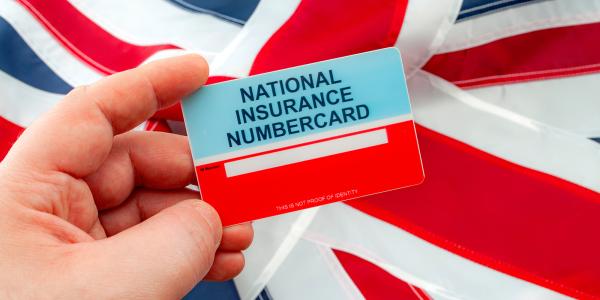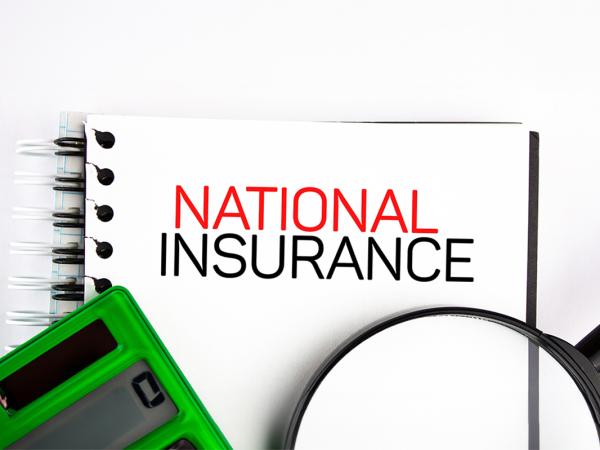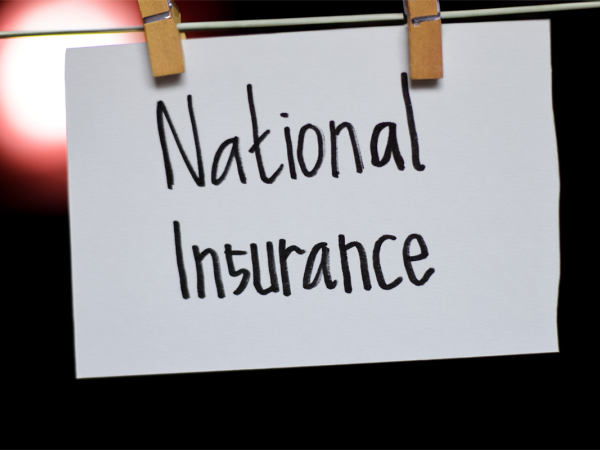National Insurance
Paying National Insurance can earn you the right to receive certain benefits, such as the state pension. We explain how National Insurance contributions (NIC) work and how to work out what you will pay. If you want information on how to get a National Insurance number (NINO) or what to do if you have lost or forgotten your NINO, visit our National Insurance numbers page.

Content on this page:
National Insurance contributions
You pay NIC if you are:
- either employed or self-employed; and
- aged 16 or over but below state pension age.
The amount of NIC you pay depends on how much you earn. NIC is only payable on earnings (that is, income from working), not on investment income such as bank interest, pension income or rental income.
The way in which you work will affect the type (or ‘class’) of NIC you pay. We explain the different classes of NIC below.
National Insurance contributions are not deductible when working out your taxable income for either the employed or self-employed. Some expenses which may be deductible for tax purposes are not deductible for National Insurance purposes (for example, certain self-funded employment expenses).
You stop paying NIC when you reach state pension age, even if you continue to work. The exception is class 4 NIC for the self-employed, which you pay for the whole tax year in which you reach state pension age. You can find out when you will reach state pension age by using the calculator on GOV.UK.
Classes of NIC
You pay class 1 NIC if you are an employee and you earn above a certain amount. Your employer takes the NIC off your wages before paying you. Your employer also pays NIC on your earnings.
There is detailed information about class 1 NIC in our page NIC for employees.
Class 2 NIC
For the 2023/24 tax year, you pay class 2 NIC as part of your overall self assessment liability for the year if you were self-employed and your profits exceeded a certain level. From 2024/25 onwards, class 2 NIC is no longer payable by self-employed people – however ,if your profits are over a certain level you be ‘treated as having paid’ class 2 NIC.
Class 2 NIC can count towards entitlement to certain contributory state benefits – as explained under the heading below: What NIC pays for.
In some cases, it is possible to pay voluntary class 2 NIC to preserve entitlement to certain state benefits. The option to pay these voluntary class 2 NICs continues to be possible in 2024/25 following the changes to class 2 NIC described above.
Detailed information on class 2 NIC can be found in our page NIC for the self-employed.
Class 3 NIC
You can pay class 3 NIC if you want to protect your rights to some state benefits where:
- you do not pay (nor are treated as having paid) either class 1 NIC or class 2 NIC, and
- you do not receive National Insurance credits or are not treated as having paid NIC
Class 3 NIC are also known as voluntary contributions (though note that in some circumstances class 2 NIC can also be paid voluntarily as mentioned above).
More information about class 3 NIC can be found on GOV.UK.
Class 4 NIC
You pay class 4 NIC if you are self-employed and your profits are above a certain level. You pay them in addition to class 2 NIC (in 2023/24 – as mentioned above, no class 2 NIC is due from 2024/25 onwards unless you are a low earner and wish to pay them voluntarily).
Class 4 NIC do not count towards any state benefits.
There is detailed information in our page NIC for the self-employed.
NIC credits
If you are unable to work, or have a limited ability to work, you might be entitled to National Insurance credits.
What NIC pays for
To qualify for some UK state benefits, you may need to have paid, been treated as having paid, or been credited with a certain amount or type of NIC. These state benefits are called contributory benefits, because they depend on your NIC contributions. In some cases, National Insurance credits will count towards these contributory benefits, but in other cases they will not. You can check the eligibility requirements on GOV.UK.
Many benefits depend on sufficient NIC being paid (or treated as paid, or credited) to create a qualifying year. For more information about qualifying years for NIC for state pension purposes, see our page National Insurance and the State Pension.
Use the following table to see which type of contribution counts towards which benefit:
| Benefit | Class 1 | Class 2 | Class 3 |
| Maternity allowance | Yes | Yes | No |
| Contribution-based jobseeker's allowance | Yes | No | No |
| Contribution-based employment and support allowance | Yes | Yes | No |
| Widowed parent's allowance (only available where spouse or civil partner died before 6 April 2017) |
Yes | Yes | Yes |
| Basic state pension | Yes | Yes | Yes |
| New state pension | Yes | Yes | Yes |
| Bereavement benefits (except bereavement support payment) | Yes | Yes | Yes |
| Bereavement support payment | Yes | Yes | No |
Note that there are exceptions to the above for share fishermen and volunteer development workers employed abroad.
Class 4 National Insurance contributions do not count towards any state benefits.
There are other benefits for which, provided the rules for claiming apply to you, it does not matter whether you have paid any or enough NIC.
Benefits which do not depend on NIC include:
- attendance allowance and disability living allowance
- personal independence payment
- child benefit
- guardian's allowance
- income-related employment and support allowance
- income-based jobseeker's allowance
- industrial injuries benefits
- carer's allowance
- severe disablement allowance
- statutory payments, for example, statutory sick pay
- working tax credit and child tax credit
- war widow's or widower's pension
- pension credit
- universal credit
How NIC is paid
The way in which NIC is paid depends on the class of NIC, as outlined below.
- Class 1 NIC
-
You pay class 1 NIC through your earnings under the PAYE system. Your employer deducts class 1 NIC from your gross wages before deductions, together with any income tax due, and pays you the net amount after deductions.
- Class 2 NIC
-
For 2023/24 you can pay class 2 NIC together with the income tax due on your self-employment profits through self assessment. Alternatively, you can make payments regularly throughout the tax year using a budget payment plan, as explained on our Self assessment tax payments page.
From 2024/25 no payment is required, unless you are paying class 2 NIC voluntarily.
- Class 3 NIC
-
You can pay class 3 NIC for the current year by quarterly bill or by monthly Direct Debit. You can also pay class 3 NIC for previous years by making a lump sum payment.
There is more information on the methods of payment on GOV.UK.
- Class 4 NIC
-
You pay class 4 NIC together with the income tax due on your self-employment profits through self assessment. To find out more see NIC for the self-employed.
Refunds of overpaid or incorrectly paid NIC
There is a limit to the amount of NIC you need to pay in a tax year (across different classes of contribution). If you have had only one employment, you should not have overpaid NIC. However, if your total earned income is more than the weekly upper earnings limit multiplied by 53 (£967 x 53 = £51,251 in 2024/25) then it is possible that you may have overpaid NIC.
HMRC do not generally reconcile each individual’s NIC. This is because it is relatively uncommon for an individual to have paid the wrong amount of NIC.
You might find you have overpaid NIC in certain circumstances, for example:
- you carried on working after state pension age and your employer continued to deduct class 1 NIC,
- you paid class 4 NIC on profits from self-employment in respect of a tax year after the one in which you reached state pension age,
- you had two or more employments on which you paid class 1 NIC, or
- you were employed and self-employed at the same time and paid class 1, class 2 and class 4 NIC.
If you overpay NIC or pay NIC incorrectly, you can claim a refund. There is a tool to help you apply for a refund of NIC on GOV.UK.
You cannot claim a refund of NIC just because you stop work or do not work for the whole tax year.
Read about NIC when leaving the UK on our page NIC in cross-border situations.
Checking your NIC record
HMRC keep a record of the NIC individuals pay. You can check your NIC record by:
- logging into your personal tax account
- logging into the HMRC app
- applying online, using the form on GOV.UK
- phoning HMRC’s National Insurance enquiries helpline – you can find the details on GOV.UK
- writing to HMRC (you can find an address on GOV.UK)
Reduced rate class 1 NIC
If you are a woman who married before 6 April 1977 and who elected before 12 May 1977 to pay reduced rate class 1 NIC, you can find more information on GOV.UK.
More information
HMRC’s National Insurance Manual contains more detailed information on NIC.



